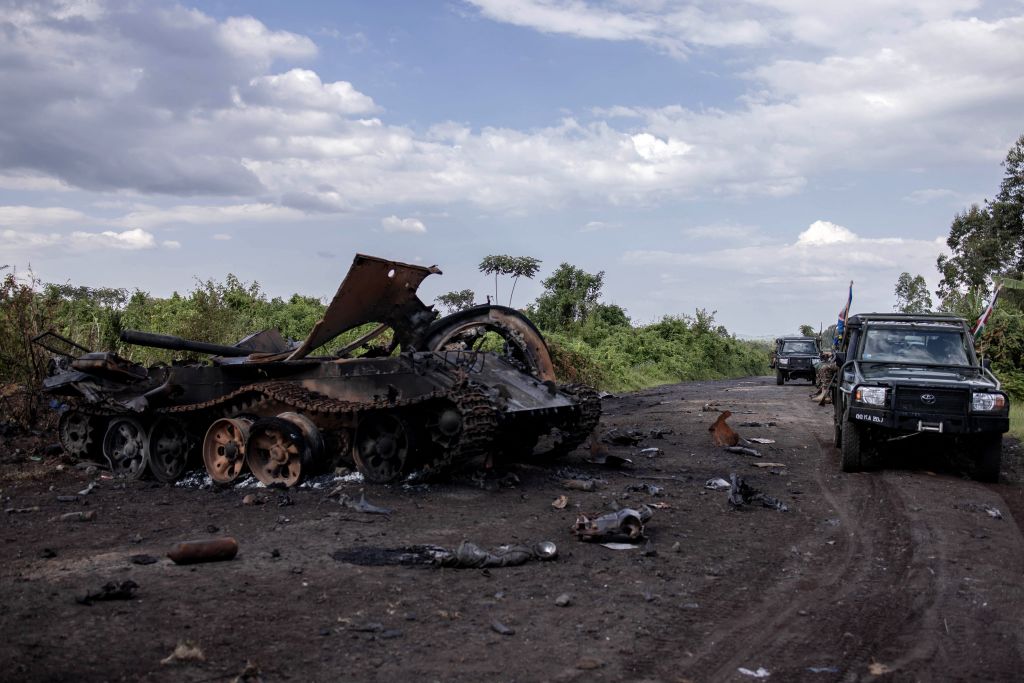ADF STAFF
Intensifying gun battles and explosions drove Prudent Kahindo and her three children from their home in February. When they arrived at an informal camp for displaced people outside the city of Goma, they found their lives were no less threatened.
“Life is extremely complicated here, we have no tarpaulin and no food,” she told The New Humanitarian magazine. “We ask for help because people here risk dying from hunger.”
For years, Goma, the largest city in eastern Democratic Republic of the Congo (DRC), has attracted the displaced in search of safety and humanitarian aid.
Makeshift displacement camps already overwhelmed with half a million people have swollen with at least 250,000 more between mid-February and mid-March, according to the United Nations.
Goma is encircled by the Rwanda-backed M23 rebels whose clashes with the Congolese military have caused the displacement crisis, but the greater threat of a full-blown regional war looms over these lands.
Jason Stearns, author and founder of the Congo Research Group, believes such a conflict already has begun.
“Increasingly, it is a regional conflict,” he told the Public Broadcasting Service. “You have intervention troops from South Africa, Tanzania and Malawi fighting pretty much against the Rwandan troops in the eastern Congo. You have Burundians fighting against Rwandan troops in the eastern Congo.
“Even though nobody is talking in terms of a regional war or saying that they’re killing each other in the eastern DRC, that is pretty much what has started happening. So I think the risks are very, very much there if diplomacy and cooler minds don’t prevail.”
M23 has gone on the offensive since the beginning of the year, seizing control of an “unprecedented” amount of territory, according to the United Nations.
The U.N. peacekeeping mission in the DRC, which is drawing down, said in a note to its staff that “the current security situation is becoming increasingly volatile as M23 has reached the northern outskirts of Sake (about 25 kilometers from Goma).”
“Recent actions by the M23 suggest their intention to take control of Goma, potentially marking their second occupation of the city after a brief period of control in 2012,” the U.N. wrote in an April 5 report.
The U.N. also has expressed concern over the rising degree of military sophistication in the conflict, as the peacekeeping mission has reported armed drones striking their bases. Rwanda has been accused of deploying surface-to-air missiles.
Meanwhile, the U.N. Security Council has pressured Rwanda to end its support for the ethnic Tutsi-led M23 militia. Despite evidence produced by independent U.N. experts showing M23 receiving material support and training from the Rwandan military, President Paul Kagame continues to deny any involvement.
With the seat of Congolese power in Kinshasa some 2,000 kilometers away, experts such as Stearns say the war-weary eastern region of the DRC has been an active theater for regional entanglements for decades.
“At the root of the M23 conflict are countries such as Rwanda and Uganda, intent on projecting power and influence into the eastern DRC, while the Congolese government seems incapable and often unwilling to stabilize its own territory,” Stearns wrote in an article for The Conversation Africa news website, published on February 29.
The sheer size of the displaced persons’ camps sprawling around the outskirts of Goma has put many more people at risk, according to Johan Brieussel, mission chief of the Doctors Without Borders relief agency stationed in Goma.
“Artillery has now reached the borders and even inside the camp,” he told Deutsche Welle TV. “The camp has become a heavily militarized zone now. That causes a lot of concern for the population and threatens humanitarian access nearby.”

